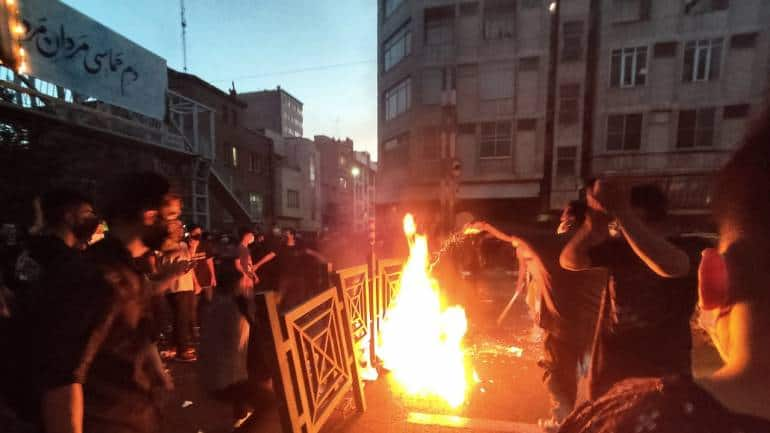
In-Depth | Iran's raging protests expose its economic pressures

In-Depth | Iran's raging protests expose its economic pressures
A
raging civil unrest, triggered by the death of 22-year-old Mahsa Amini in mid-September, has come as a lethal blow for the authoritarian clerical regime of Iran which has long been battling charges of endemic corruption, political suppression and economic mismanagement.
While the protests are centered around the strict hijab rules governing the country's female population, experts see underlining economic issues, primarily the soaring inflation and high unemployment, as the key catalysts of the agitation.
The demonstrations erupted on September 16, when Amini, a woman belonging to the Iranian Kurdistan province, died in capital Tehran under mysterious circumstances. Her death came three days after being rounded up by the country's Guardian Patrol or the morality police, for being allegedly improperly dressed as per their standards.
The high-handedness of the morality police, and the alleged mistreatment of Amini in police custody, sparked the early rounds of demonstrations in the Kurdish province. Soon, the protests blurred ethnic lines and spread to all urban regions of the country. In the crackdown that has followed, at least 52 persons have died and hundreds are detained, says Amnesty International.
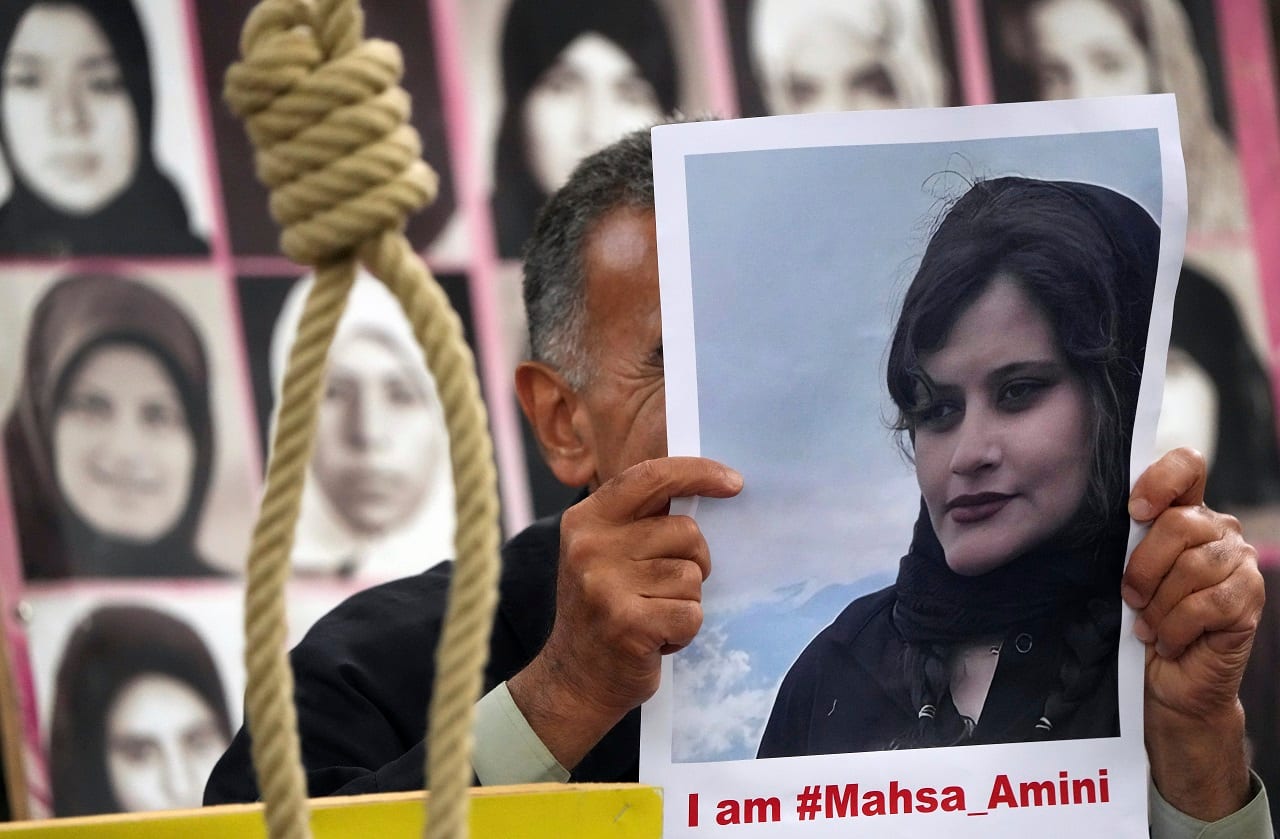 Exile Iranians of the National Council of Resistance of Iran gather in front of the embassy of Iran in Berlin, Germany, Tuesday, Sept. 20 (AP Photo)
Exile Iranians of the National Council of Resistance of Iran gather in front of the embassy of Iran in Berlin, Germany, Tuesday, Sept. 20 (AP Photo)
The demonstrations, which have now snowballed into one of the biggest agitations in Iran since 1979 Islamic revolution, is not only being viewed as an expression of angst against the alleged lack of rights for women, but also as the culmination of mass public anger, which has been simmering over the past several years due to the lack of economic avenues, analysts point out.
The ongoing protests "exemplify the rage of the Iranian populace, who are dealing with issues ranging from skyrocketing inflation, massive unemployment, rising poverty, environmental disasters, and deteriorating infrastructure", Dr Sujata Ashwarya, Professor, Centre for West Asian Studies, Jamia Millia Islamia University, said while speaking to Moneycontrol.
"In conjunction with an authoritarian political system and a fractured society, the situation has reached a boiling point and is, in my view, irreversible," she added.
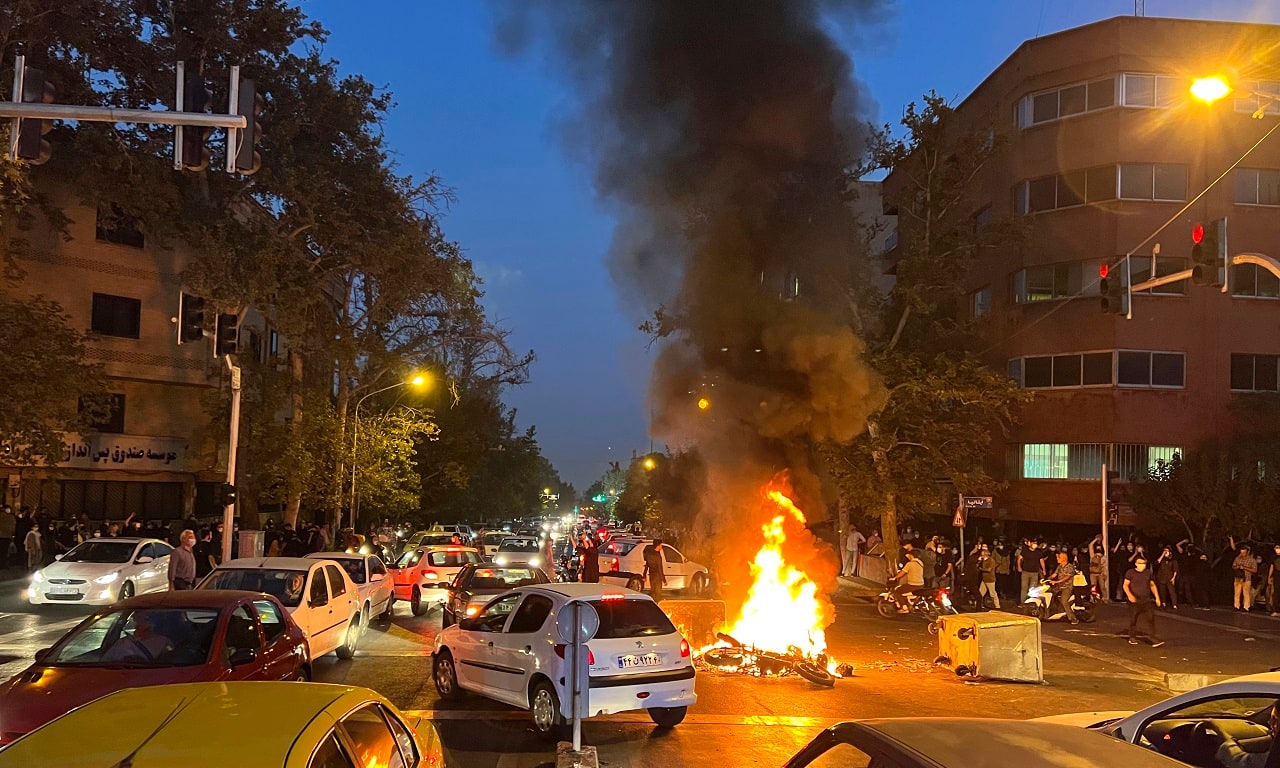 Protests following the death of Mahsa Amini in downtown Tehran on Sept 19 (AP Photo)
Protests following the death of Mahsa Amini in downtown Tehran on Sept 19 (AP Photo)
One-third Iranians in poverty
The web of Western sanctions has crippled Iran over the past decade, and has led to an economic stagnation which has pushed scores of middle class families into poverty, analysts say.
This was also reflected in a report released by Iran’s Ministry of Labour and Social Services in August 2021, which said nearly 30 million people or one of every three Iranians fall under the poverty line.
While the Iranian regime has attempted to direct the domestic anger towards its sanction-imposing foreign rivals, a considerable amount of rage has been piling up against the government. This had resulted in the agitations of 2017 and 2019, which were led by the wider Iranian Democracy Movement to highlight the mishandling of the economy.
The situation has worsened in the aftermath of COVID-19 pandemic, with Iranian policy analysts raising concern over the escalating challenges being faced by a bulk of the population to earn their livelihood.
This economic despair is one of the major factors uniting those who are opposed to the Ebrahim Raisi-led government, according to Abdolreza Davari, a conservative Iranian analyst. While Davari has denounced the current round of agitation, he said in a tweet that around 95 percent Iranians are "worried about their livelihoods today and for their and their children’s future".
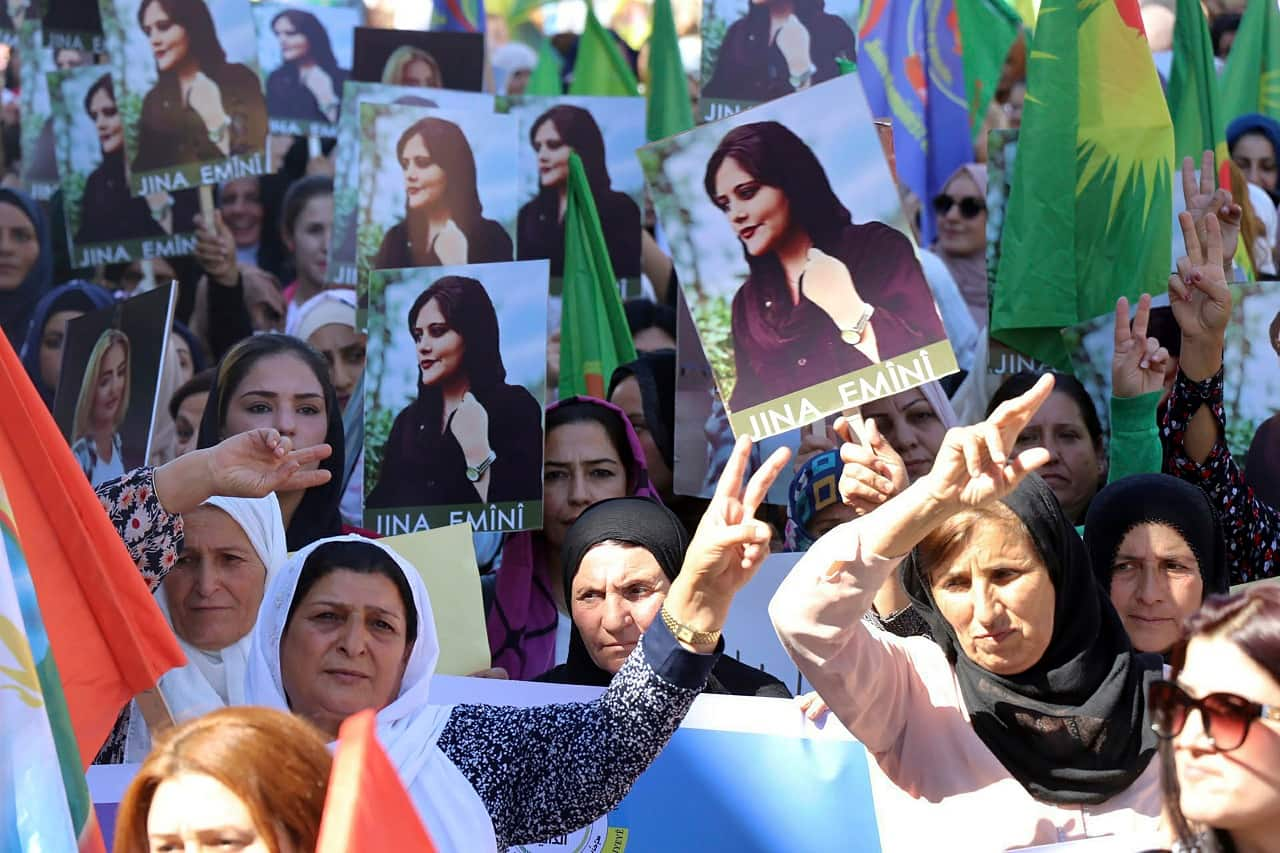 In this photo provided by Kurdish-run Hawar News Agency, Kurdish women hold portraits of Iranian Mahsa Amini, during a protest condemning her death in Iran, in the city of Qamishli, northern Syria, on Sept. 26 (Image: Hawar News Agency via AP)
In this photo provided by Kurdish-run Hawar News Agency, Kurdish women hold portraits of Iranian Mahsa Amini, during a protest condemning her death in Iran, in the city of Qamishli, northern Syria, on Sept. 26 (Image: Hawar News Agency via AP)
Inflation: Iran's 'endemic' economic challenge
High and volatile inflation has been an "endemic economic and social issue in Iran" that has contributed to rising poverty and social tensions, says a working paper released by the International Monetary Fund (IMF) last month.
Annual CPI inflation reached "nearly 50 percent" at the end of FY 2020-21 (Iranian fiscal year that ended on on March 20, 2021) and "averaged 40 percent" during FY 2021-22, the global financial institution said.
The recent data released by Statistical Centre of Iran shows inflation rate stood at 52.2 percent in the month of August 2022.
"Coupled with low economic growth and high unemployment, rising inflation has fueled widespread protests in the country amid a significant erosion in purchasing power," says the IMF working paper, which was published on September 7, around a week before the current round of agitation broke out.
While inflation has worsened over the past couple of years, it has remained high throughout the last decade, particularly after the sanctions were imposed by Washington during Barack Obama's presidency. The 2015 nuclear deal offered a brief period of reprieve, but the gains made were reversed after Obama's successor Donald Trump unilaterally annulled the pact.
The sanctions, which have driven businesses away and deprived Iran of the larger oil market, have led to a lack of resources to meet various demands on public expenditures. This, in turn, has constantly fueled inflation, economists point out.
It was in 2017, months after crippling sanctions were re-imposed on Iran by the United States, when countrywide protests had erupted over the sharp jump in prices of food and other essential items.
In 2019, another round of agitation broke out after commodity prices, including fuel, rose by 50-200 percent.
Experts find similarities between the current round of protests in Iran with that which have erupted over the past few years. "Protests have long been a feature of Iranian political landscape. The current wave of protests appears to be similar to the 2009 Green Movement (that erupted following the alleged fraudulent election in which hardline president Mahmoud Ahmadinejad retained power). It was brutally suppressed, and the current round of protests may suffer the same fate unless the Iranian regime loses the will to use force against its own people," Ashwarya said.
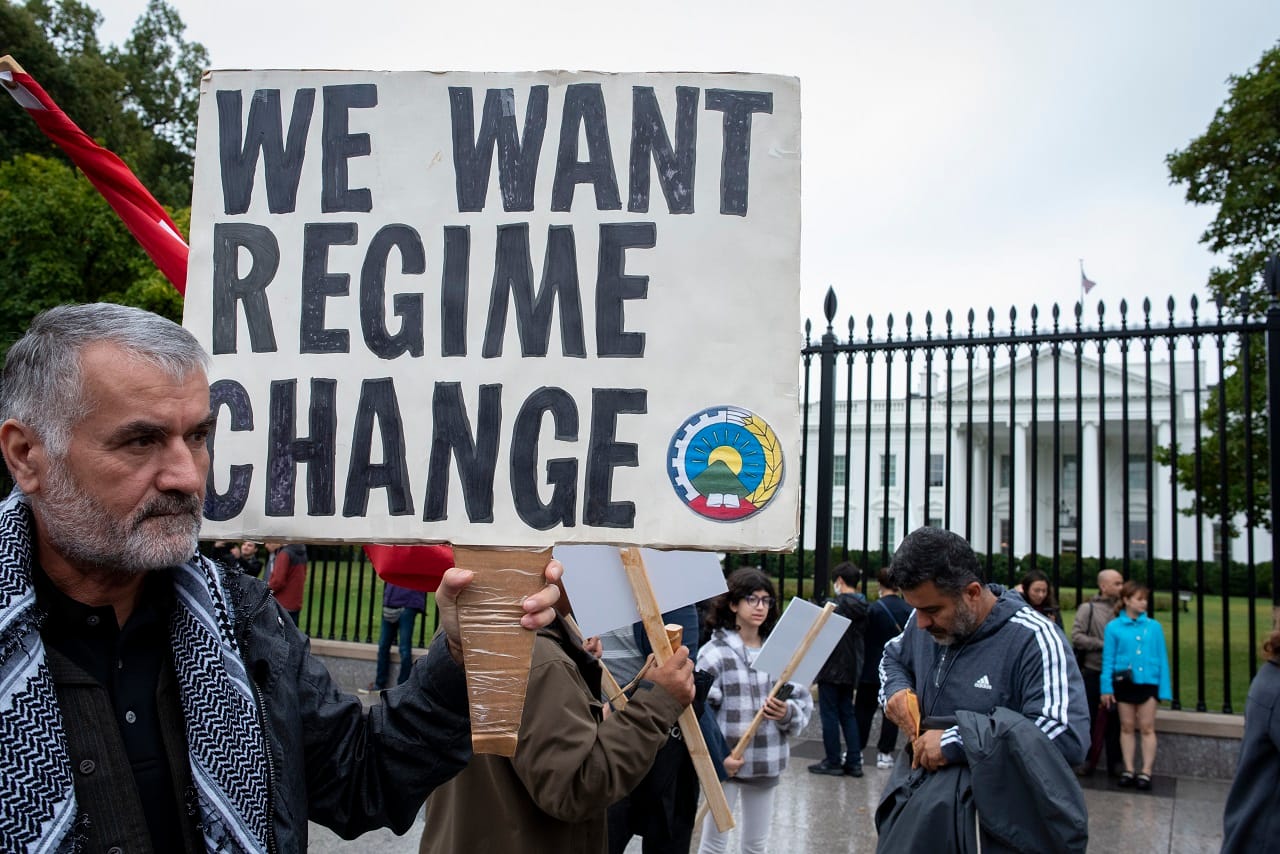 A member of the District of Columbia's Kurdish community demonstrates against the Iranian regime in front of the White House in Washington on Oct. 1 (AP Photo)
A member of the District of Columbia's Kurdish community demonstrates against the Iranian regime in front of the White House in Washington on Oct. 1 (AP Photo)
High unemployment
Iran's overall unemployment rate is feared to again exceed the 10 percent-mark, after dropping to 9.8 percent in 2021. The World Economic Outlook report released by the IMF in April forecasts the unemployment rate to stand at 10.2 percent in 2022 and 10.5 percent in 2023.
In the first quarter of current fiscal, the unemployment rate was 9.2 percent, which was 0.4 percent higher as compared to the COVID-19-hit corresponding period of the past fiscal.
The sluggish economy has most severely affected the job-finding prospects of Iran's young populace, as the unemployment rate in 15-35 age group stands at 16.6 percent, as per the data shared by Statistical Centre of Iran for Q1 of FY23.
The World Bank, citing the modeled estimates of International Labour Organisation (ILO), says that a massive 27.2 percent of Iran's youth - aged 15-24 - were unemployed in 2021. However, a section of Iranian analysts have raised apprehensions over the numbers, pointing out that a major section of the country's youth pursue higher education and enter the labour market at a later age.
Analysts see a connect a between the current protests and the prevailing state of unemployment and inflation, but add that the core issue driving the agitation remains the demand for justice in Amini's death.
"An economic downturn always plays the role of a catalyst in any movement. So, it will be safer to say that it is an underlying cause that is only strengthening the root cause," Sourish Ghosh, an independent researcher and international affairs expert, told Moneycontrol.
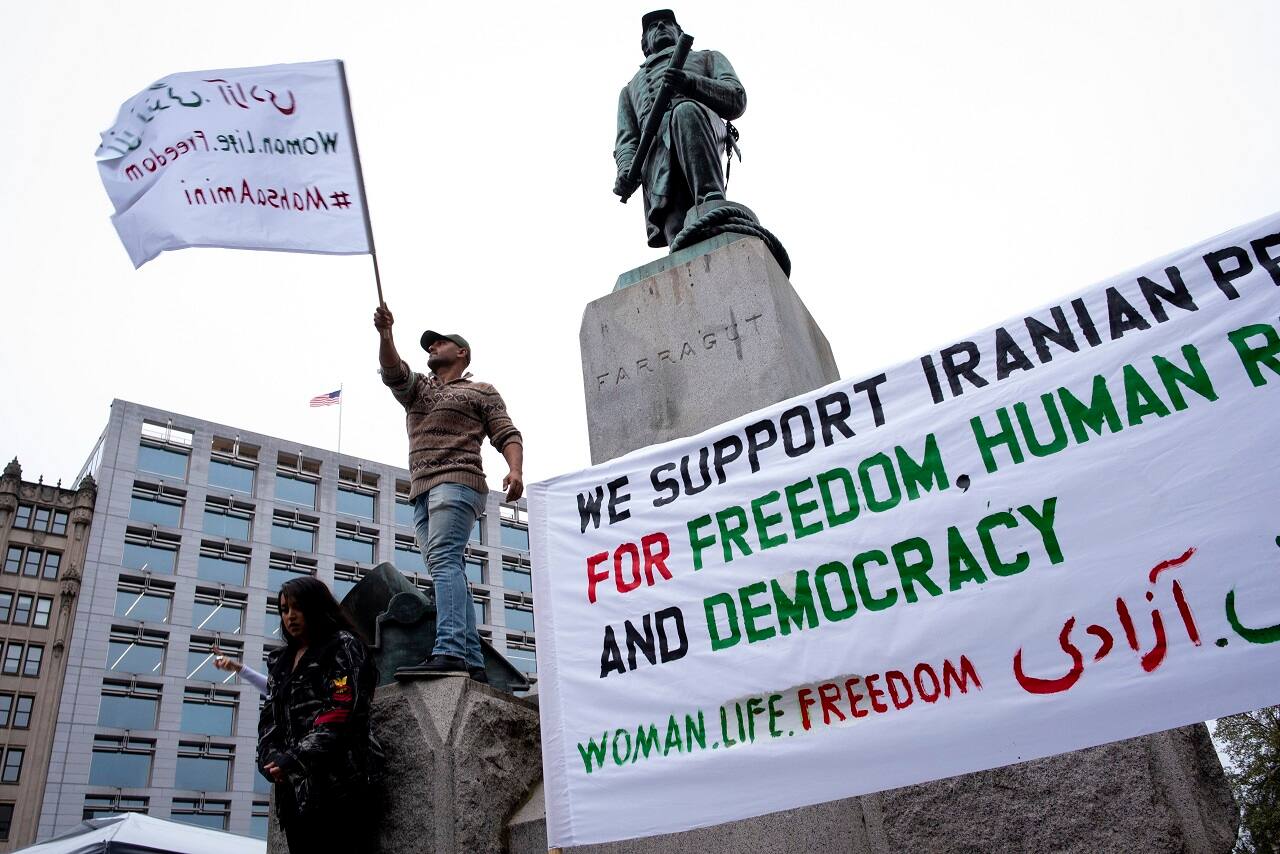 Visuals from a demonstration in Washington against the Iranian government, on Oct. 1 (AP Photo)
Visuals from a demonstration in Washington against the Iranian government, on Oct. 1 (AP Photo)
Nuclear deal talks
Since the outbreak of protests in Iran, the country's top two rivals - the United States and Israel - have overtly extended support to the demonstrators. The Iranian regime has accused the West of stoking the unrest in a bid to create political instability in the country.
The sharp exchanges between Iranian and Western top-ranking officials has led to the speculations of a derailment in the talks to revive the 2015 nuclear deal. Since Joe Biden assumed the US presidency last year, attempts have been made to resume the pact, but Washington and Tehran are yet to reach a common ground.
According to experts, the protests in Iran may be used as a reason to delay the talks by either sides, but it is unlikely to irreversibly hurt the process of negotiation.
Both, Tehran and Washington, can use the protests "as an alibi to derail the negotiations", Ghosh said. "Diplomacy and negotiations often function on the basis of national interest. If both parties find a profitable bargain, the deal will happen even if all the protesters are put behind bars. Iran is a smart power, it knows how to deal with the US and its allies. I don't think this movement has yet reached the stage to hurt Iran's national interest or weaken its negotiation power," he added.
According to Ashwarya, the protests are unlikely to affect Iran's position vis-a-vis the nuclear deal talks as its "international image is already tainted".
"The nuclear deal has been stalled for a number of reasons, including Russia’s objections, as one of Iran’s few strategic partners, and its own conflict with the IAEA’s inspections protocol. Good governance was never a requirement for the revival of the nuclear deal in the first place, so the protests won't matter as much as they would in a normal country," she said.